Vacuum impregnation in metal castings and powdered metal parts refers to the sealing of leaks resulting from porosity. In this post, we will discuss in detail one of the selection variables, the three different types of vacuum impregnation processes.
In general, all vacuum impregnation process types follow the same four steps:
- Impregnation-Impregnate the sealant into the porosity/leak path using vacuum (and pressure).
- Excess Sealant Recovery-Remove excess sealant through gravity, rotation or centrifugal force.
- Wash/Rinse Station-Wash residual sealant from the part’s internal passages, taps, pockets and features.
- Cure Station-Polymerize the impregnated sealant in the leak path.
Related: Learn the 4 Steps to the Vacuum Impregnation Process
The impregnation process type is defined by the first step, which will largely determine if the castings are sealed. The subsequent steps will have a greater impact on assembly characteristics than on sealing performance. Armed with this understanding, the three commercially viable impregnation process types are:
- Dry Vacuum and Pressure (DVP)
- Dry Vacuum (DV)
- Wet Vacuum (WV)
Dry Vacuum and Pressure Impregnation
Dry vacuum and pressure impregnation is the most robust and thorough method of impregnation. DVP is used when a casting or component’s sealing requirements are critical or when parts have a design that makes them difficult to seal using the other impregnation processes. Dry vacuum and pressure is the preferred method for impregnating parts and components manufactured for the automotive, aerospace, and defense industries.
What happens during the DVP process?
Step1:
Parts are loaded into a dry impregnation chamber, and the vacuum is applied until a predetermined set point is achieved. This vacuum set point has been specified in US military specifications to be no less than 29” of mercury (23.4 Torr or 31mbar). There is no liquid present in the vessel to impede air removal from the porosity. All parts see a uniform vacuum pressure that originates from the vacuum pump. This is the “Dry-Vacuum” portion of the process.
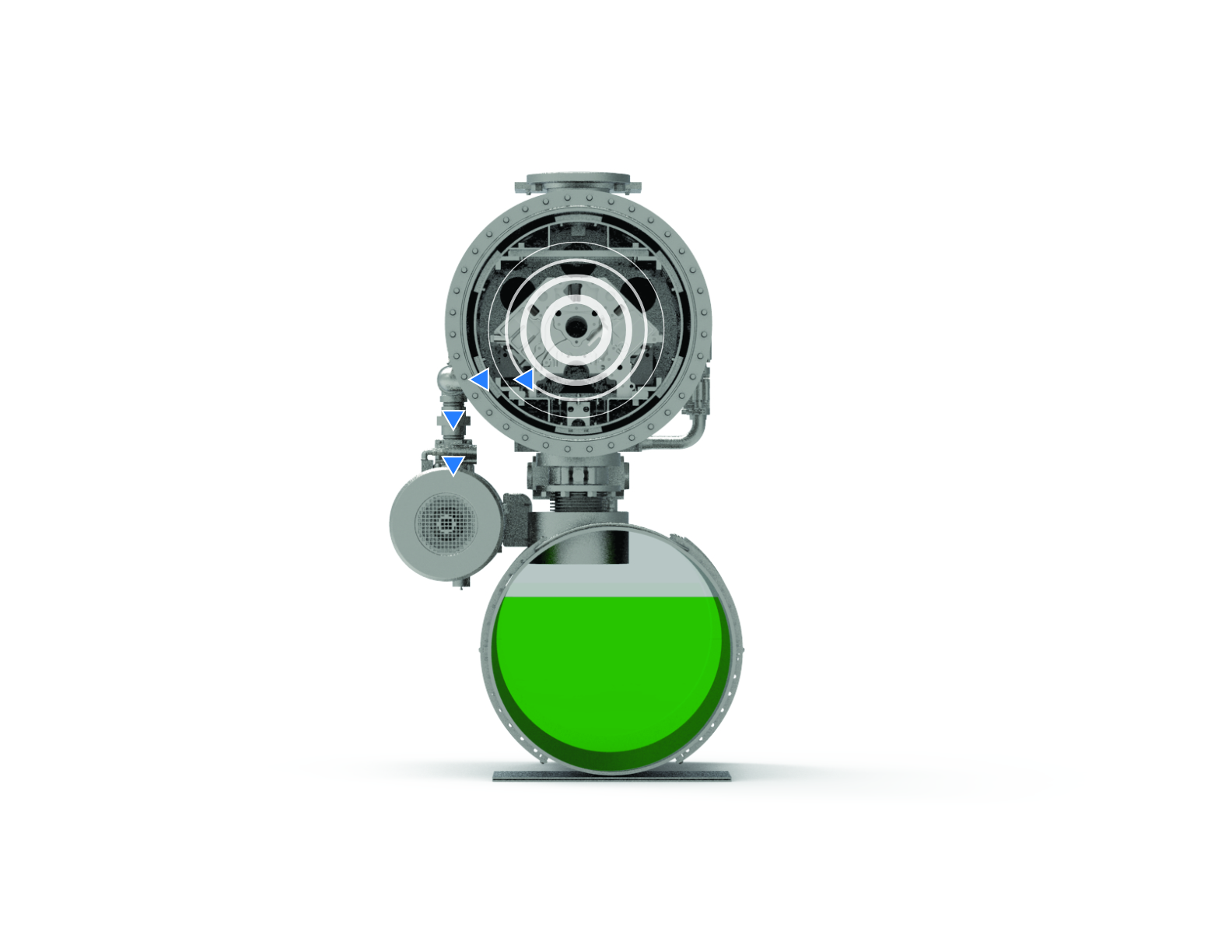
Step2:
When the vacuum end point is reached, the transfer valve is opened. The sealant (shown in green) is de-gased and pulled from the reservoir to the impregnation vessel while the vacuum is maintained.
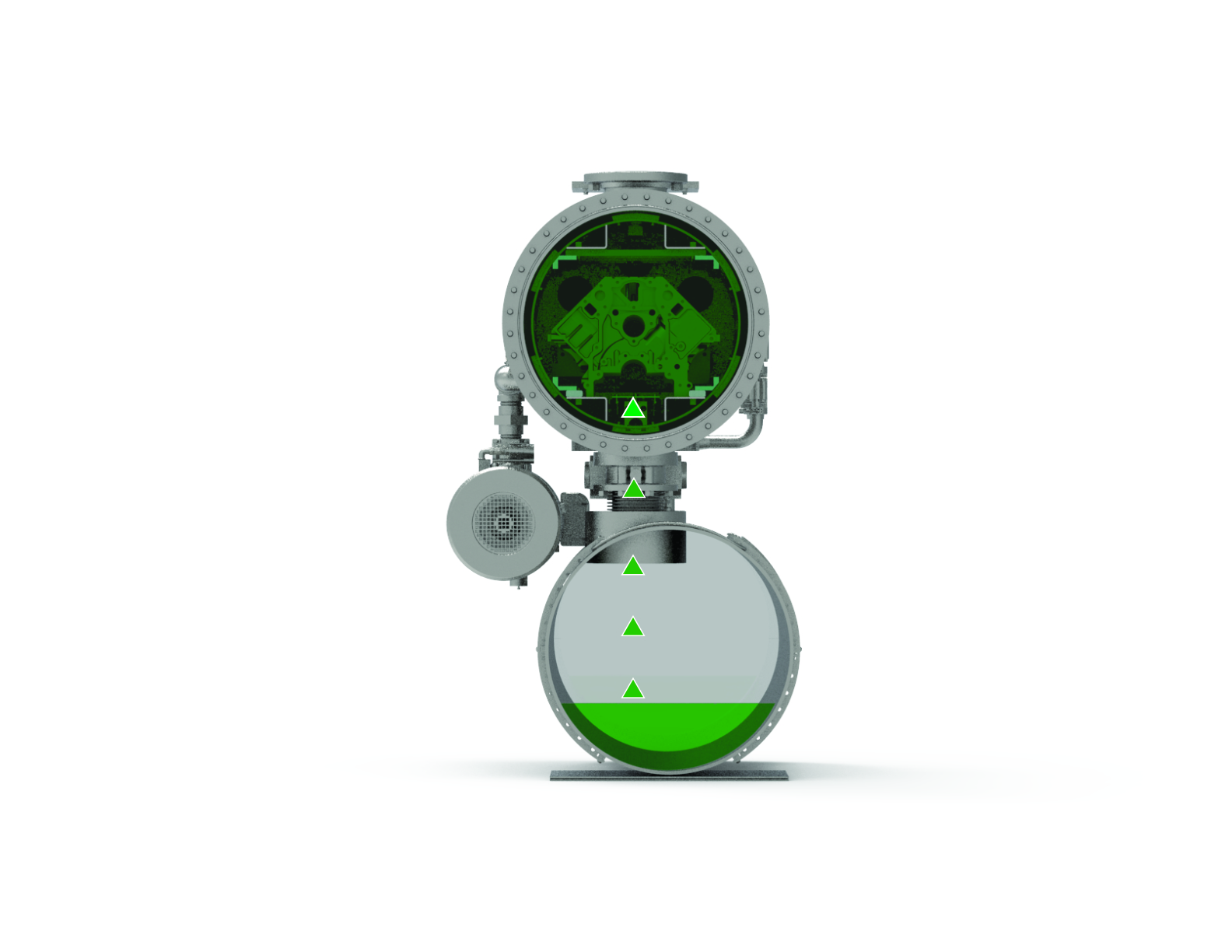
Step 3:
Next, the vacuum is released, and overpressure is applied (typically between 70-90 PSI) from above. The pressure is then held to allow the sealant to penetrate the porosity. The transfer valve is re-opened and the sealant is transferred back to the storage reservoir. The parts are removed to be washed and cured.
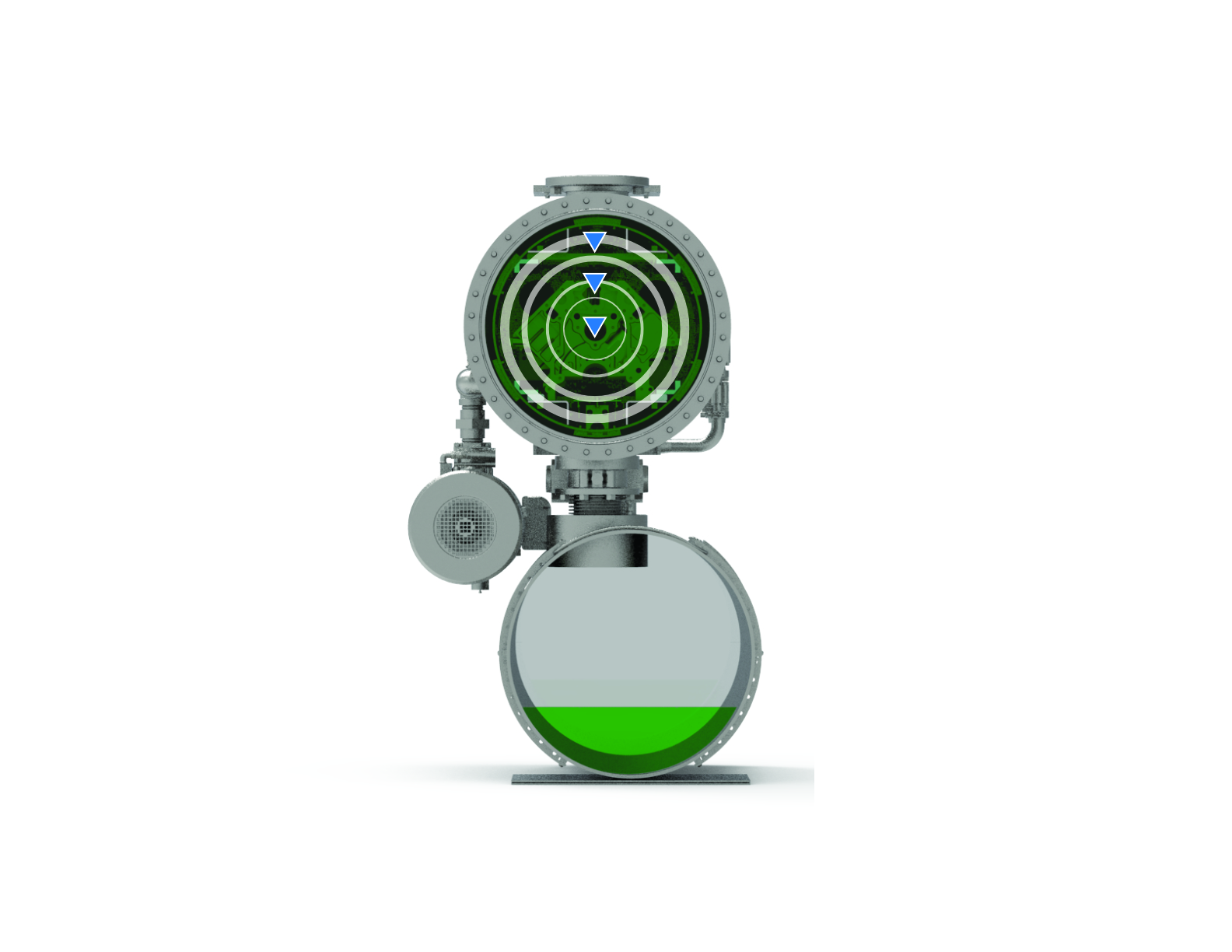
Dry Vacuum Impregnation
Dry vacuum impregnation is an effective method to seal porosity and leak paths. However, since it lacks the final pressure stage to assist in sealant penetration, it is less thorough and requires much longer cycle times.
What happens during the DV process?
Step 1:
Parts are loaded into a dry impregnation chamber, and the vacuum is applied. As in the DVP system, vacuum is held until all of the air is evacuated and upon completion of the vacuum cycle the transfer valve is opened, and the sealant (shown in green) is de-gassed and pulled from the reservoir to the autoclave while the vacuum is maintained.

Step 2:
Next, the vacuum is released. No pressure is applied. Sealant penetration is solely dependent upon atmospheric conditions and the vacuum created within the pores of the casting. Hence the rate of penetration is much slower and may not seal all types of porosity. The sealant is then transferred back from the autoclave to the storage reservoir, and the parts are removed, washed and cured.
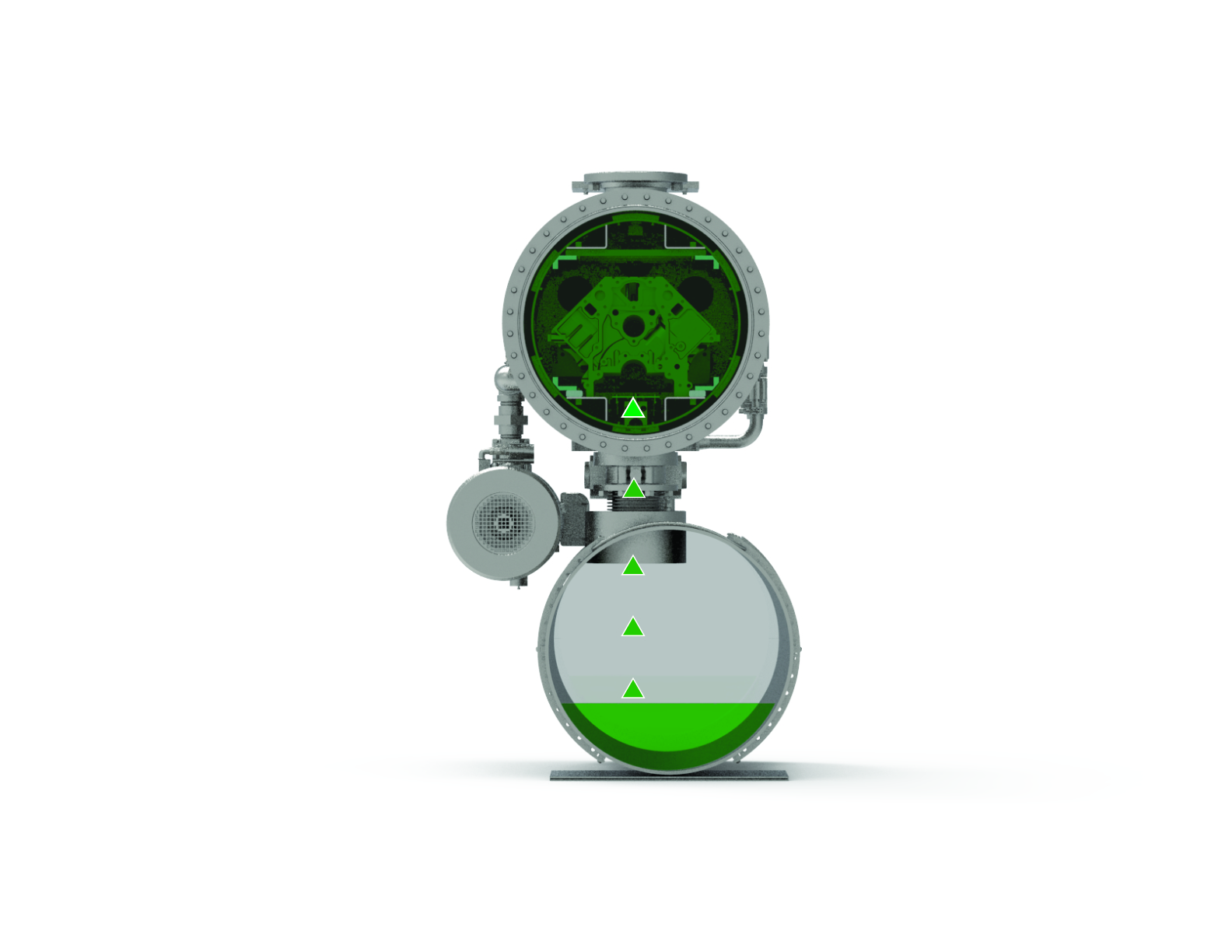
Wet Vacuum Impregnation
Wet vacuum impregnation is suitable to seal larger porosity and leak paths. The wet vacuum process, in general, uses anaerobic sealants which cure at room temperature. It is less consistent in its sealing effectiveness, but it is the preferred process through which to seal powdered metal parts and electrical components due to the large and open nature of the porosity. Because the wet vacuum process does not require a certified pressure vessel, a sealant reservoir or a sealant transfer line, it is a low-cost option, but it is limited in its application.
What happens during the WV process?
Step 1:
The sealant (shown in green) is stored in the vessel. Parts are loaded into the wet impregnation chamber, and the vacuum is applied. The vacuum is held until all of the air from the vessel and sealant. The vacuum level grows weaker as it must overcome the hydraulic head pressure of the sealant in the ‘wet’ chamber.
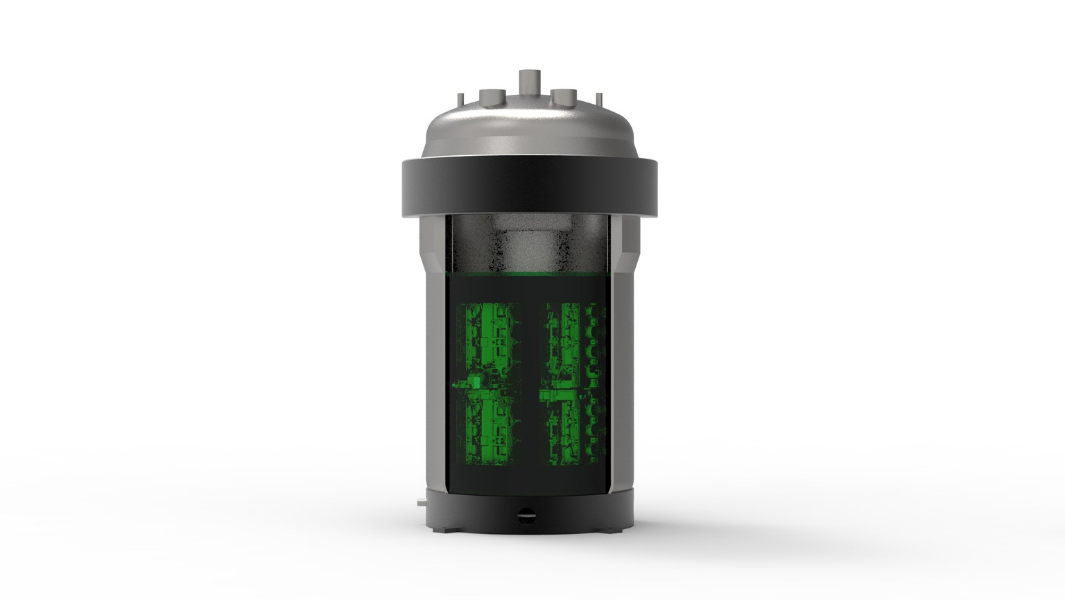
Step 2:
Next, the residual vacuum is released into the atmosphere. Parts are left to soak in the sealant at atmospheric pressure in order to penetrate into the porosity. After a sufficient amount of time, the parts are removed.
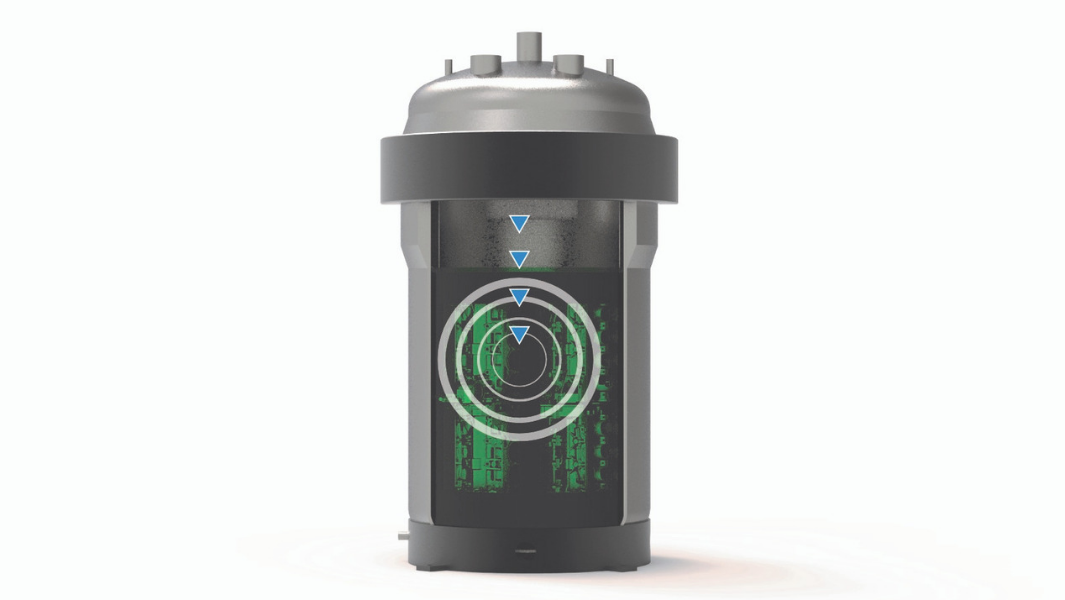
In Conclusion
The three commercially available processes, DVP, DV, and WV each have distinct elements that follow understandable physical and scientific principles. Manufacturers want sealed components that meet their pressure test specifications and their customer’s program goals. The impregnation process can deliver guaranteed results when manufacturers make their process decisions and selections supported by science, physics, engineering, and confirmed data.

